
Arcosanti, photo Jessica Jameson
Paolo Soleri was born in Turin, Italy, on 21 June 1919 and went on to influence entire generations not only of fellow architects, but also of creatives strongly oriented towards visual science fiction, from comics to cinema. A pupil of Frank Lloyd Wright, it is usually said of him that he built little but left many ideas, some of which would appear to have crossed the boundaries of reality, reaching a faraway galaxy.
It all began with Soleri’s experiments in the great wilderness of Arizona: like Lawrence of Arabia, the Italian architect fell madly in love with the desert and its sand, which he could so easily mould and turn into ceramics or a stage for grand ideas.
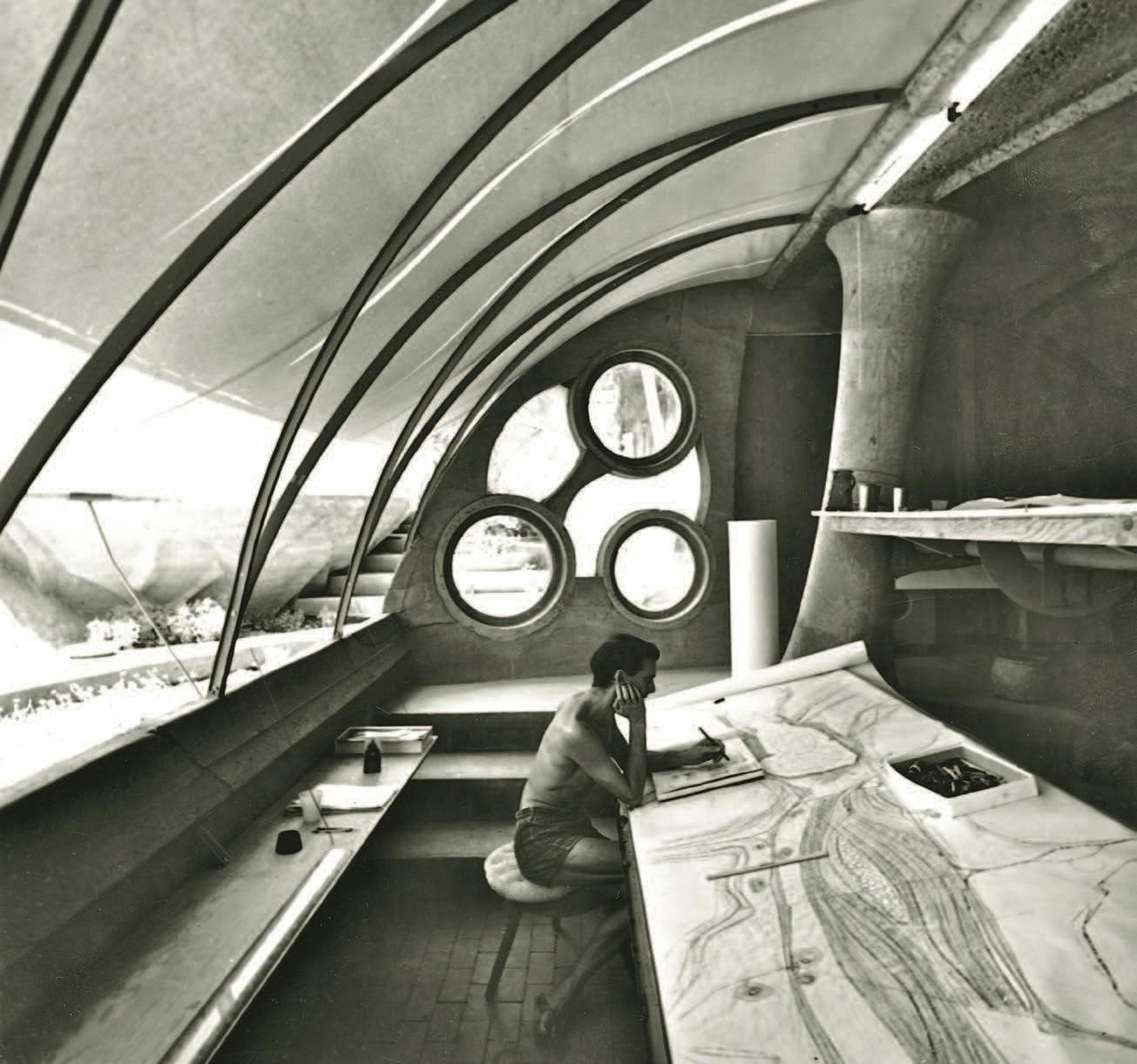
Paolo Soleri in Cosanti's 'drafting room' in the mid-1960s while working on one of his projects, photo by Stuart A. Weiner used with permission from the Weiner family
In 1947, after completing his studies at the Turin Polytechnic, Soleri joined Frank Lloyd Wright, becoming his pupil for two years. The idea of an organic architecture capable of blending into the environment was certainly a principle consistent with Soleri’s sensibility, even though he proved far more radical than Wright in terms of his conception of urban life. Soleri could not conceive of a life made up of neighbourhoods, detached houses, driveways and well-defined green spaces; he could not stand the idea of work, leisure and daily life taking place in different locations, far apart from each other. Soleri was critical of the loss of communal life and the prospect of spending much of one’s existence in a car. He declared war on this lifestyle, foreseeing a dystopian society of “hermits on four wheels”. In accordance with these principles, after leaving Wright’s studio, the Italian architect settled near Phoenix and embarked on experimental work. First he crafted terracotta objects, then he built a number of private domed dwellings with underground spaces, shielded from the fierce rays of the sun.

The 'dome house' consists of a sleeping area carved into the hillside and a living room, under the cover of a glass canopy that provides warmth, © Cosanti Foundation

Arcosanti, photo Jessica Jameson
In some ways, this is where Soleri and science fiction begin to intersect: die-hard Star Wars fans are likely to associate these domed dwellings with Luke Skywalker’s home in the middle of the Tatooine desert: a low-lying domed space providing shelter from the sun and sandstorms, a kind of anti-heat igloo that Lucas created by integrating pre-existing Berber architecture into the Tunisian locations of Episode IV. But these private dwellings are only the beginning of Soleri’s work. In the mid-1950s, the adventure of Cosanti began, a house-workshop in which the architect settled. It was here that he designed all his subsequent “arcologies”: ecological architectural structures striking a balance between man and nature. In these spaces, distances are measured in minutes of walking and anything non-essential is left out, in terms of both architectural forms and construction techniques. Cosanti actually derives from a play on words, “anti-cosa”, i.e. “anti-thing”, a motto against materialism and superfluousness.
Binary sunset... from A New Hope, Star Wars: The Digital Movie Collection, Star Wars UK, all rights reserved
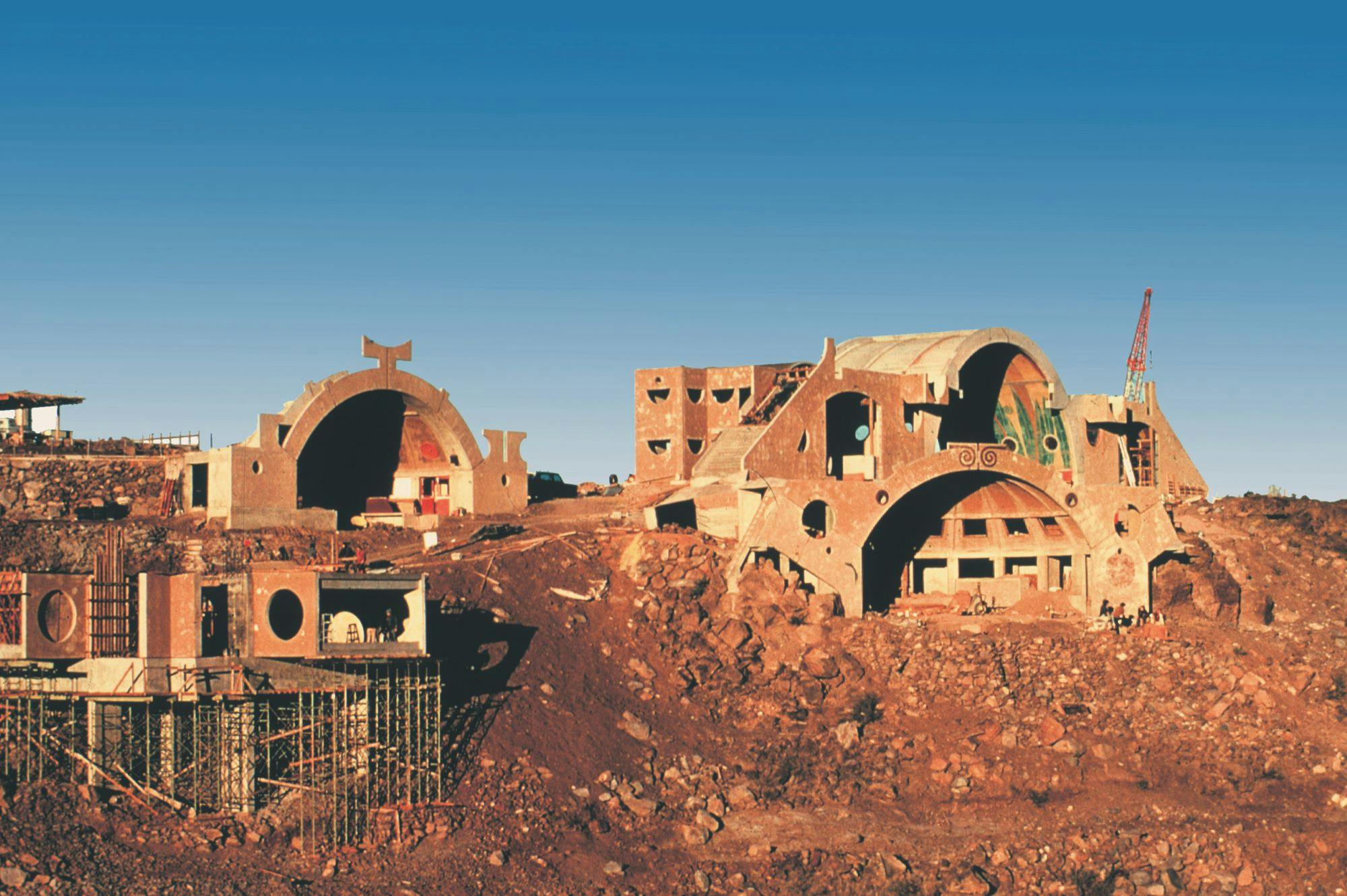
Arcosanti, photo Ivan Pintar
Many ideas were born in Cosanti, the most successful being Arcosanti, a permanent experimental building site that since the 1970s has been home to dozens and dozens of volunteers, who contribute to its maintenance and development. It is a sampler of buildings, a prototype settlement in the Arizona desert where people can live, work and enjoy themselves as part of a community. In its early days, the project immediately drew a lot of attention, including from the media. It became a favourite destination for young people and architects eager to contribute to such a revolutionary project – one so removed from the canons of that individualistic society which was becoming more and more entrenched in the United States. In short, this place became the capital of arcology.

Cosanti (1966), photo Colly Soleri
According to journalistic sources and members of the Cosanti Foundation, it was precisely in those years that George Lucas visited Arcosanti. As one can easily imagine, this proved an enlightening encounter for the young director, who was seeking inspiration in contemporary culture. To this day, Arcosanti remains an out-of-this-world place. In many ways, it seems to be located on the desert planet of Tatooine and resembles the city of Mos Eisley, a destination for the worst scum of the galaxy. The colours, shapes, light and shadows of Arcosanti apparently helped Lucas visualize what may be regarded as the most important planet in the entire saga, the birthplace of Anakin Skywalker and home of his son Luke, protected from a distance by the old Obi-Wan Kenobi.
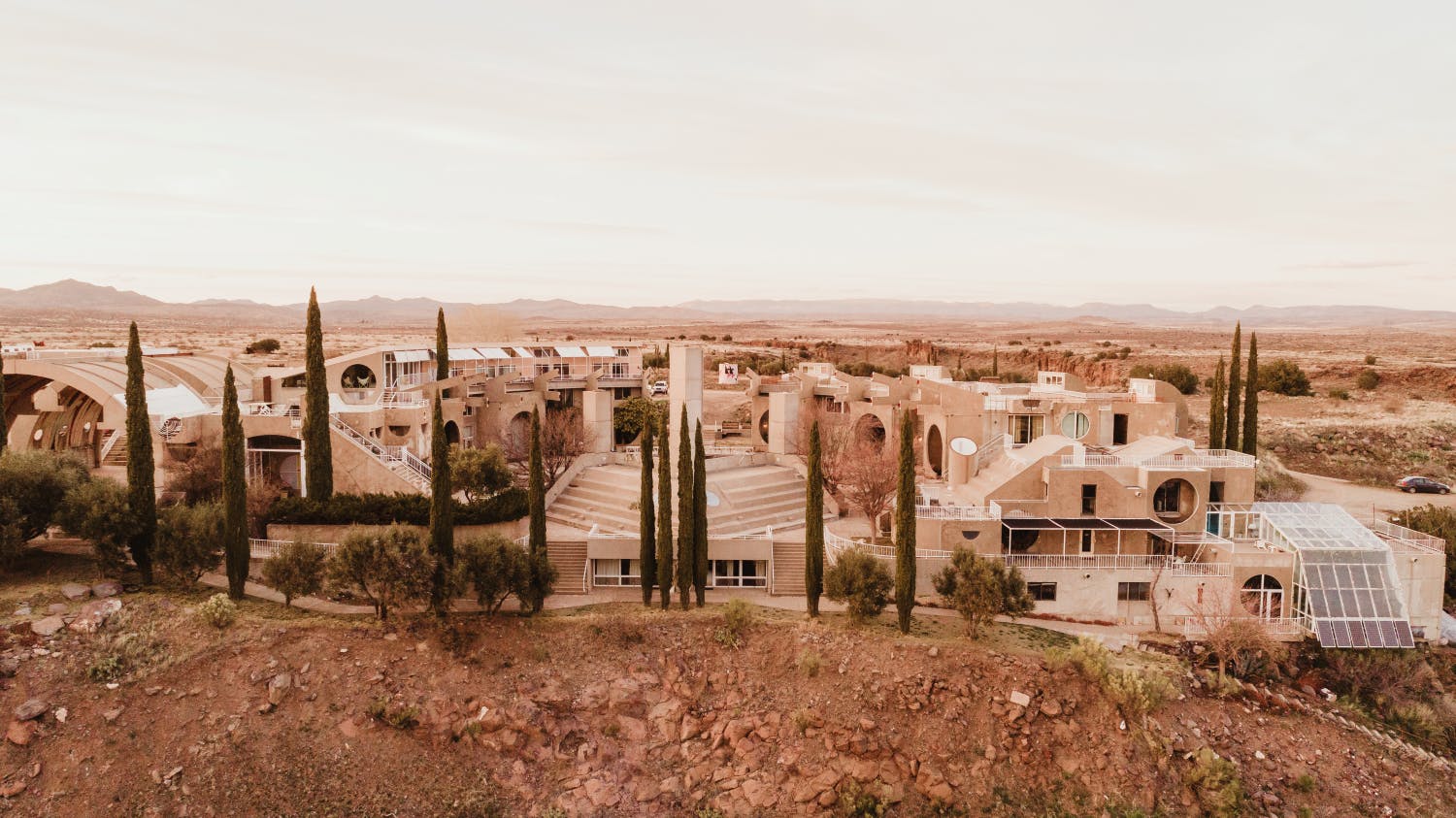
Arcosanti, photo Jessica Jameson
As far as Soleri’s influence on Lucas is concerned, I would venture to go even further. While it is most unlikely that in the 1970s Lucas saw any of the Italian architect’s other designs (drawn on long sheets of paper now preserved in Arcosanti’s archives), many echoes are detectable in certain visions found in Lucas’ prequel trilogy. The latter was released between 1999 and 2005, by which time Soleri’s designs had certainly become more accessible. How can one not detect similarities between the giant floating cities designed by Soleri and the Gungan civilization or the clone settlements on Kamino? How can one not find similarities between Soleri’s plans for cities cut into the rock and planets like Geonosis and Utapau? Perhaps this is only speculation, but there is no doubt that Soleri influenced sci-fi urban imagery.
On that small, happy island in the middle of the desert, a dream continues to be pursued today: making Arcosanti a true urban centre housing 5,000 people. While the fulfilment of this plan is still far off, Soleri’s legacy remains very strong. In my opinion, it is clearly visible in the works of artists such as Jean Giraud, aka Moebius, and Roger Dean; in the films by Lucas and Ridley Scott, as well as in Denis Villeneuve’s Dune.
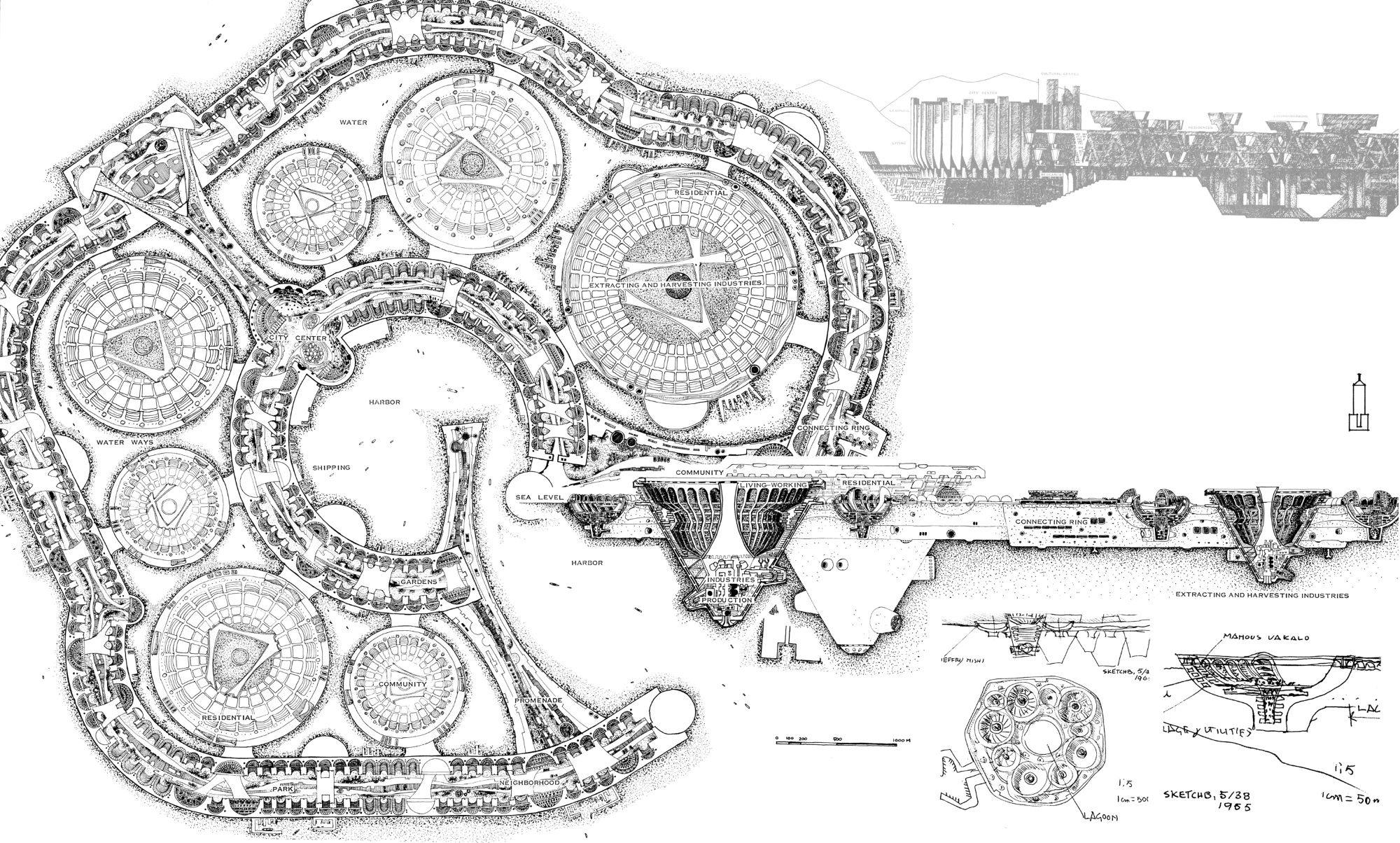
Novanoah II - Project for a floating city of 2,400,000 people
Arcology. The City in the Image of Man (Paolo Soleri, 1969), p. 38
© Cosanti Foundation

Hexaheadron - Population: 170,000.
Arcology. The City in the Image of Man (Paul Soleri, 1969), p. 113
© Cosanti Foundation
Sleek shapes, terraces, an apse-like theatre, a pottery factory and wind chimes, minimal housing and breathtaking sunsets: it might sound like a movie or a visionary’s dream, but it is neither of these things. Soleri – as he himself claimed – was no visionary or utopian thinker, because a visionary is someone who believes in something that does not exist, whereas Soleri’s ideas, projects and legacy can still be seen, touched and visited today.
From Turin to Arcosanti, from Earth to Tatooine.
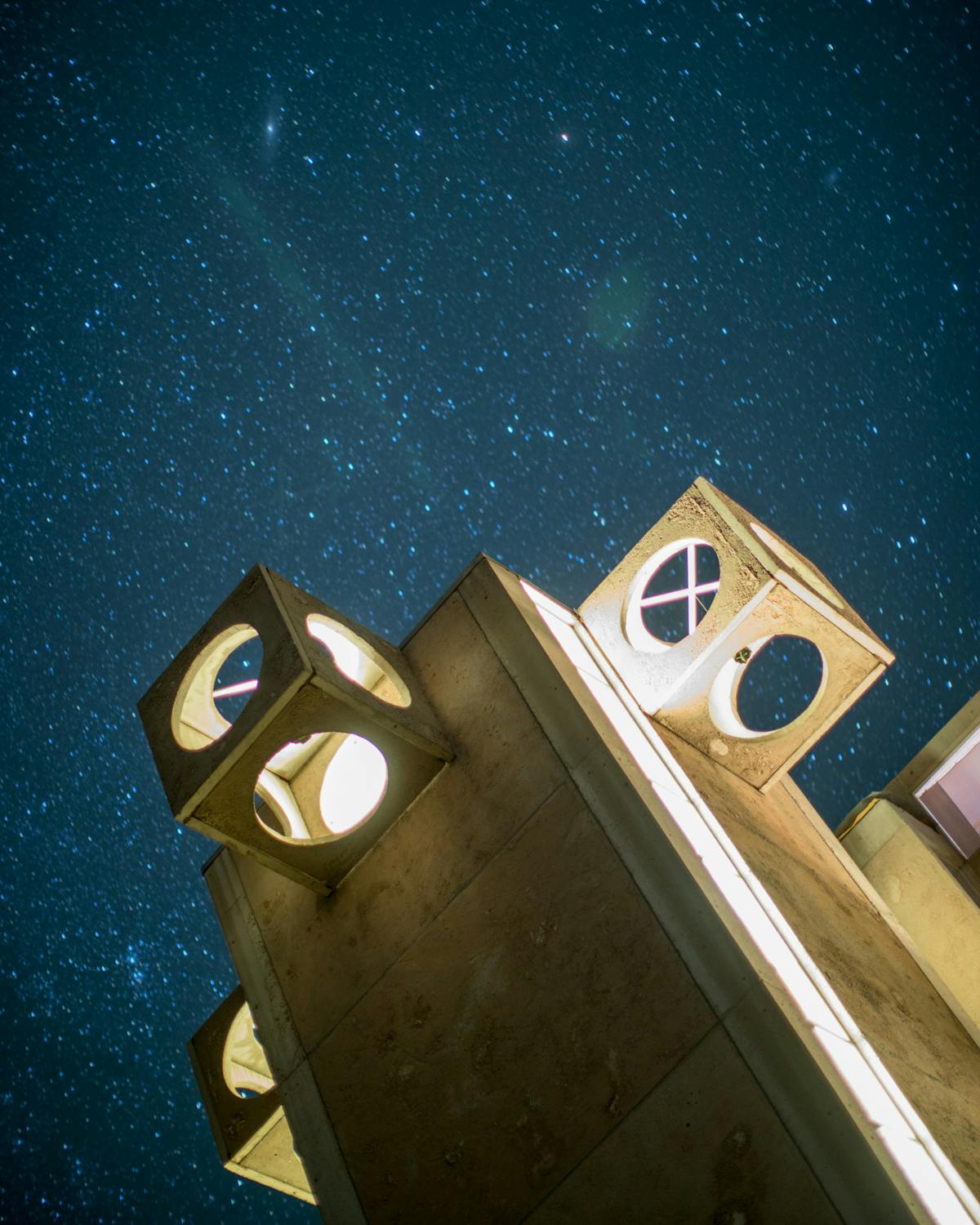
Arcosanti, photo Ivan Pintar